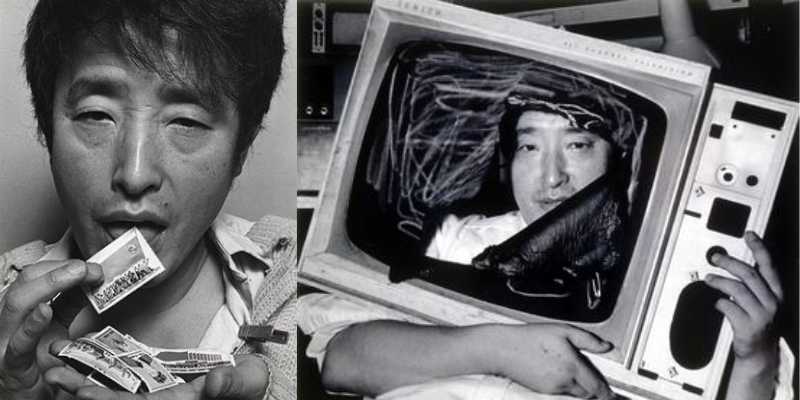“Skin has become inadequate in interfacing with reality. Technology has become the body’s new membrane of existence”
-Nam June Paik
Regarded as the “Father of Video Art,” Nam June Paik (1932–2006) produced an extensive and innovative body of work that continues to influence modern artistic forms. Paik was born in Seoul, Korea, in 1932. The turmoil of the Korean War affected his early years, leading his family to relocate to Hong Kong and later Japan. This stormy beginning set the stage for a career spanning multiple mediums and continents.

Germany was the starting point of Paik’s avant-garde adventure, as he followed his passions for performance and music. His interactions with notables such as George Maciunas and John Cage brought him into the neo-dada Fluxus movement’s sphere of influence. The pivotal moment occurred in 1963 when Paik’s prepared television sets were on display in a solo exhibition at Galerie Parnass in Wuppertal, Germany. This exhibition changed television’s visual and conceptual environment.

After arriving in America in 1964, Paik made his home in New York City and continued to explore the mediums of television and video. Interestingly, he was among the first musicians to use a handheld video camera in 1965. In 1969, he and Japanese engineer Shuya Abe collaborated to create a groundbreaking video synthesiser that completely altered the field of electronic moving images.
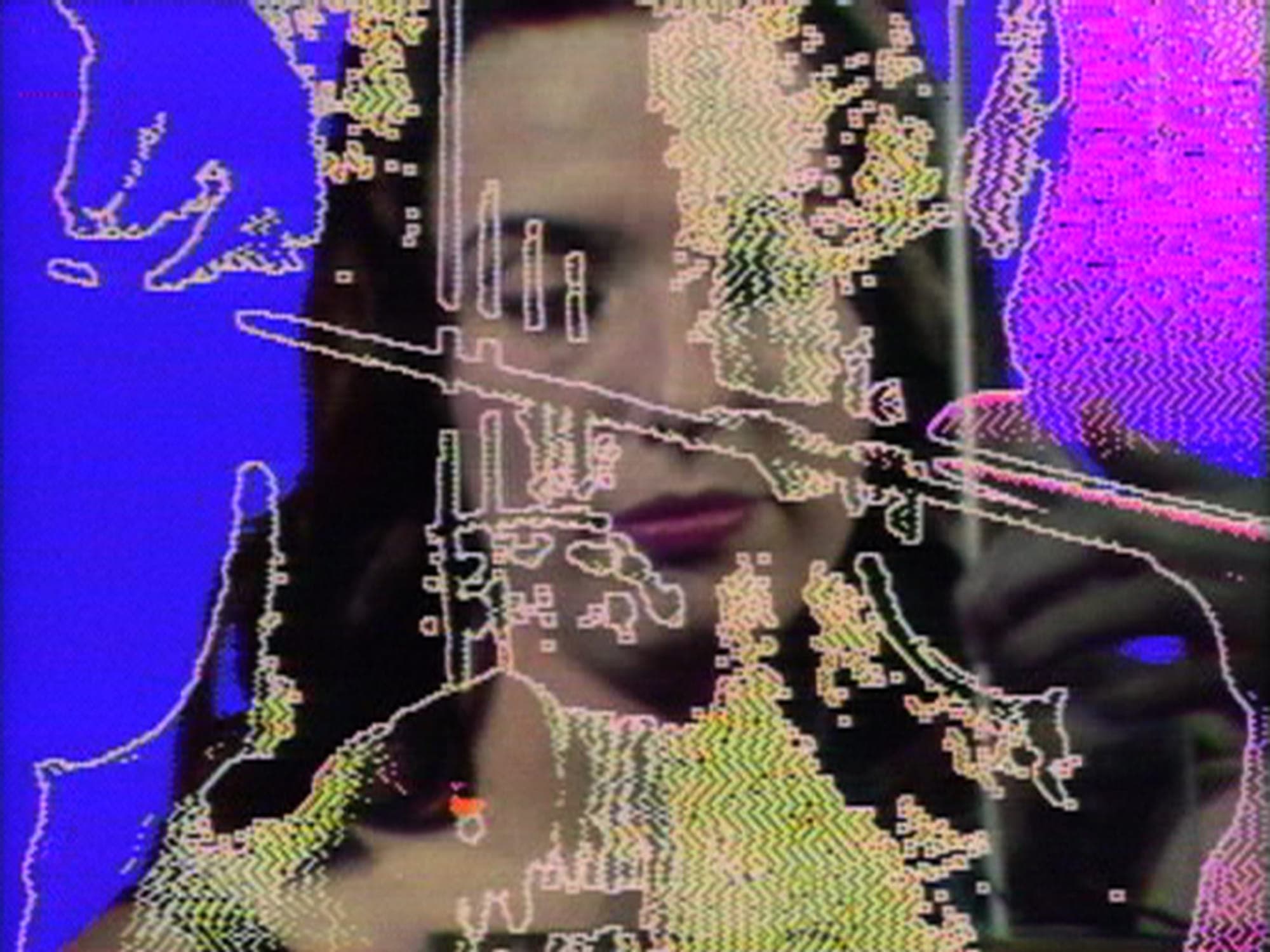
Numerous exhibitions, retrospectives, and major art events, such as Documenta, the Venice Biennale, and the Whitney Biennial, demonstrate the artist’s works. To honour his legacy, the Nam June Paik Art Centre opened its doors in South Korea in 2008.
Nam June Paik Artworks

From ground-breaking videotapes like “Global Groove” (1973) to recognisable sculptures like “TV Buddha” (1974) and “TV Cello” (1971), Paik’s breakthroughs spanned his career. His installations, such as “Video Fish” (1975) and “TV Garden” (1974), further demonstrated his ability to slickly combine technology with creativity. Some of his other works are listed below:
1. TV Bra for Living Sculpture (1975)
In an effort to humanise television, Paik created a series of performances in partnership with avant-garde cellist Charlotte Moorman. In TV Bra for Living Sculpture, Moorman plays her cello while sporting working television sets over her nude breasts. In addition to questioning social conventions, this performance artwork demonstrates Paik’s dedication to bringing video technology down to a personal, human scale and promoting a dynamic relationship between the body and art.
2. Good Morning Mr. Orwell (1984)
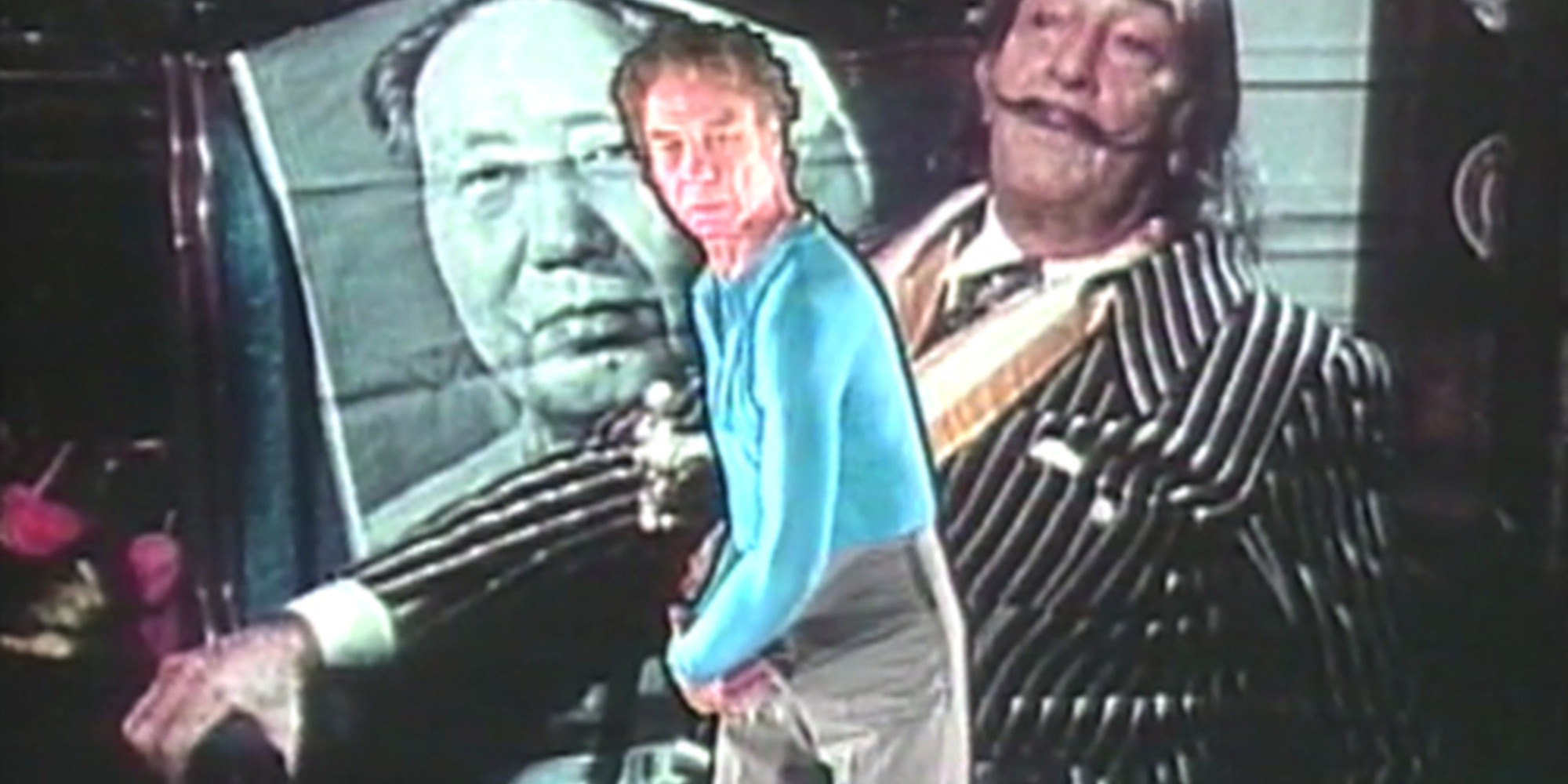
The good effects of technology and Paik’s vision of an infinite world are demonstrated in this ground-breaking global satellite broadcast. The presentation, which defied George Orwell’s dismal vision by showcasing joint contributions from well-known artists and airing concurrently in several nations. In the context of the Cold War era, Paik’s conviction in the unifying power of art and technology is reflected in Good Morning Mr. Orwell.
3. Nam June Paik Electronic Superhighway
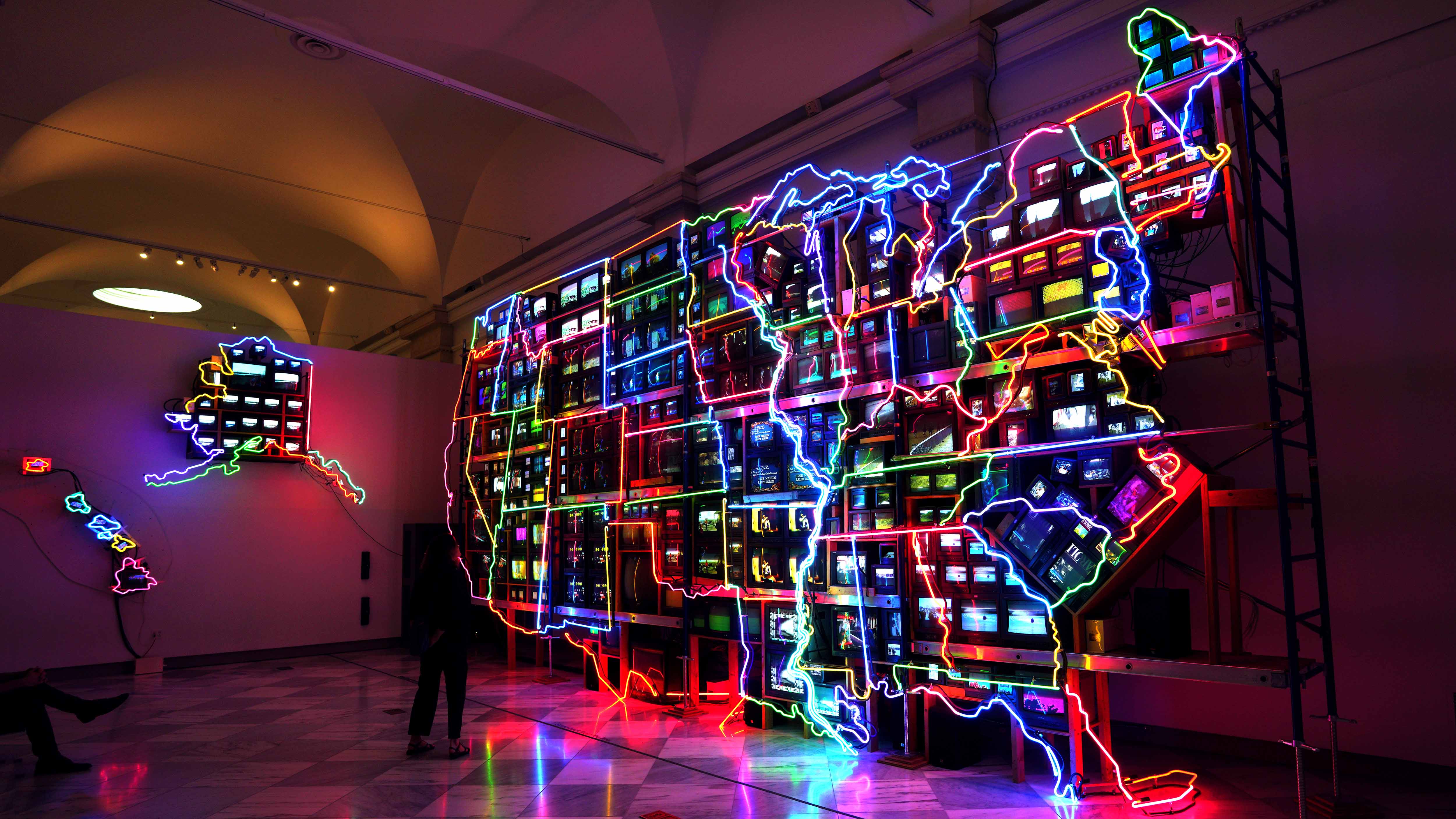
Paik’s impact was not limited to the creative community. Prefiguring the role of social media sites such as Facebook and YouTube, he dreamed of a “video common market,” promoting the open global exchange of art, knowledge, and cooperation. His use of the phrase “electronic superhighway” predicted the modern, networked digital world we live in.
“Electronic Superhighway: Continental U.S., Alaska, Hawaii (1995)” was a large-scale installation made up of 336 televisions. Through the use of media technology, Electronic Superhighway captures Paik’s idea of an interconnected America. Video snippets depict each state, highlighting the impact of films and TV shows on how we view the world and ourselves. Paik’s term, “electronic superhighway,” anticipates the virtual connectedness that would come to characterise the Internet era.

The documentary “American Masters – Nam June Paik: Moon Is the Oldest TV” offers insight into the remarkable life of Nam June Paik, following his ascent from Japan-occupied Korea to the forefront of the New York art scene. The documentary received positive reviews after its 2023 Sundance premiere. It went on to play in theatres in several major American cities and was screened at esteemed locations like the Museum of Modern Art and Film Forum.
Nam June Paik’s career has been devoted to humanising technology, motivated by his early study in classical music and his affiliation with Fluxus. Whether through interactive installations or anthropomorphic objects, his work provokes thought about technology use and its effects on contemporary society. He continues to inspire a new generation of artists to explore the boundless possibilities at the nexus of art and technology with his innovative ideas and pioneering enthusiasm.
References:
- TheArtStory- Nam June Paik
- Smithsonian American Art Museum- Nam June Paik
- Artnet- Nam June Paik
- Wikipedia- Nam June Paik
- PBS- American Masters – Nam June Paik: Moon Is the Oldest TV
Read Also:
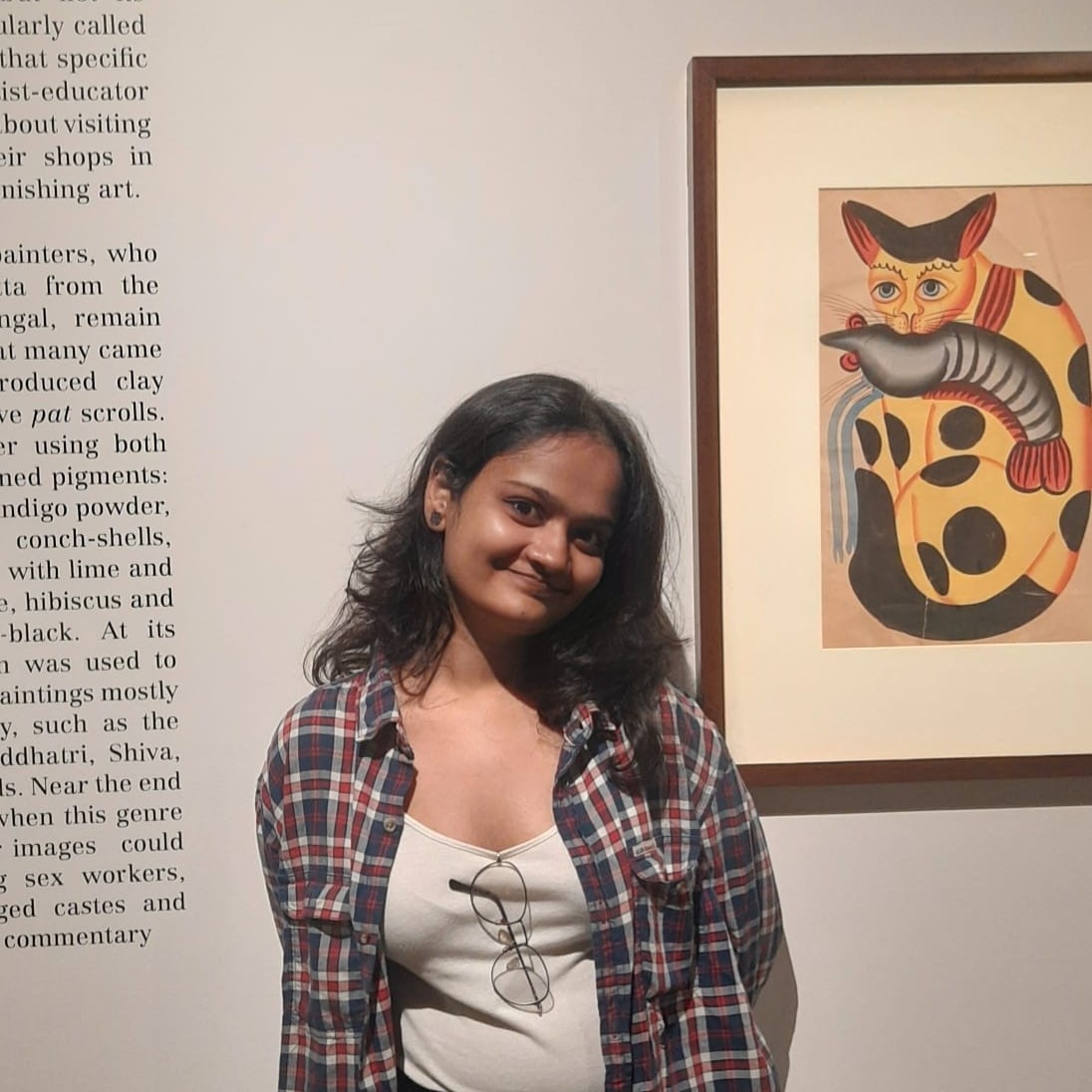
Vaishnavi Srivastava is a learning writer, a keen researcher and a literature enthusiast. She is a Sub-editor at Abir Pothi.


